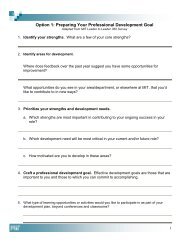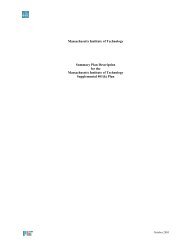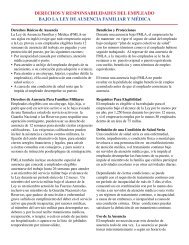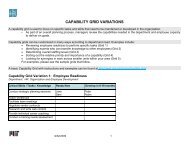Helping parents in developing countries improve adolescents' health
Helping parents in developing countries improve adolescents' health
Helping parents in developing countries improve adolescents' health
Create successful ePaper yourself
Turn your PDF publications into a flip-book with our unique Google optimized e-Paper software.
Nepal, <strong>parents</strong> have been targeted for <strong>in</strong>tervention based on the observation that Nepali<br />
youth are embedded <strong>in</strong> a culture with a strong age-based hierarchy, and that adult approval<br />
and behaviour change are essential for achiev<strong>in</strong>g youth participation and behaviour change<br />
around reproductive <strong>health</strong> issues.<br />
The majority of the activities <strong>in</strong>cluded <strong>in</strong> the review of develop<strong>in</strong>g country projects assist<strong>in</strong>g<br />
<strong>parents</strong> of adolescents 5 are adolescent-focused rather than parent-focused <strong>in</strong> nature.<br />
Regardless of focus, they tend to <strong>in</strong>corporate the concept of parent roles <strong>in</strong>directly, but<br />
they lack knowledge of the relationship between particular parent<strong>in</strong>g roles and adolescent<br />
outcomes. Almost all projects implicitly acknowledge the importance of provision and<br />
protection, most (26 of 34) address issues of connection, about one quarter (8 of 34)<br />
<strong>in</strong>clude skills for behaviour control, a few (3) specifically identify the <strong>in</strong>fluence of modell<strong>in</strong>g<br />
of appropriate behaviour, and another 3 projects explicitly consider the foster<strong>in</strong>g of respect<br />
for <strong>in</strong>dividuality <strong>in</strong> their activities.<br />
Whether parent- or adolescent-focused, the overall objective of most projects is the<br />
reduction of one particular adolescent <strong>health</strong> risk. The problem areas most commonly<br />
addressed are:<br />
• Sexual and reproductive <strong>health</strong>, <strong>in</strong>clud<strong>in</strong>g HIV: The largest number of projects aims to<br />
reduce the risks associated with early onset of sexual activity and/or unprotected sex.<br />
Of the 34 projects identified, 28 <strong>in</strong>cluded this as one of their areas of focus. For<br />
example, the parent<strong>in</strong>g component of the Youth Intervention Programme <strong>in</strong> rural<br />
Nyanza Prov<strong>in</strong>ce of Kenya was developed with the objective of delay<strong>in</strong>g sexual debut<br />
and sexual risk behaviours of pre-teens and teens <strong>in</strong> the region, especially to prevent<br />
HIV transmission.<br />
• Substance use: Several programmes take as their primary objective the reduction of<br />
alcohol and substance use among adolescents. Of the 34 projects, 13 named<br />
substance use as one of their areas of focus. For example, Mentor Colombia provides<br />
programm<strong>in</strong>g for <strong>parents</strong> as part of a multi-level <strong>in</strong>tervention to prevent the misuse of<br />
legal and illegal substances and to promote young people’s <strong>health</strong> and well-be<strong>in</strong>g.<br />
Society for the Care of Adolescents (SCAN) Parents Meet<strong>in</strong>g (India)<br />
22 <strong>Help<strong>in</strong>g</strong> <strong>parents</strong> <strong>in</strong> develop<strong>in</strong>g <strong>countries</strong> <strong>improve</strong> adolescents’ <strong>health</strong>

















